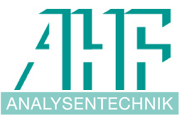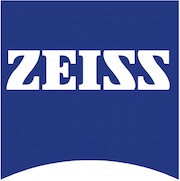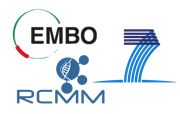Organizers
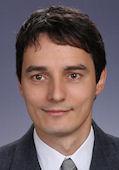 Dr. György Vámosi graduated as a physicist in Debrecen in 1991. He was a Ph.D. student at the Max Planck Institute of Biophysical Chemistry, Göttingen, Germany, then at the University of Debrecen, from which he received his Ph.D. degree in 1999. Since 1999 he works in the Cell Biology and Signaling Research Group of the Hungarian Academy of Sciences and the University of Debrecen, where he is co-principal investigator of the ‘Cell Biophysics - Protein-protein interactions in transmembrane signaling’ research group. He spent one year at the German Cancer Research Center, Heidelberg, Germany. He uses and develops fluorescence microscopy and spectroscopy techniques for the study of interleukin receptors and their relation to MHC molecules, and the interactions and dynamic properties of transcription factors. He is the coordinator of the Hungarian Bioimaging Network.
Dr. György Vámosi graduated as a physicist in Debrecen in 1991. He was a Ph.D. student at the Max Planck Institute of Biophysical Chemistry, Göttingen, Germany, then at the University of Debrecen, from which he received his Ph.D. degree in 1999. Since 1999 he works in the Cell Biology and Signaling Research Group of the Hungarian Academy of Sciences and the University of Debrecen, where he is co-principal investigator of the ‘Cell Biophysics - Protein-protein interactions in transmembrane signaling’ research group. He spent one year at the German Cancer Research Center, Heidelberg, Germany. He uses and develops fluorescence microscopy and spectroscopy techniques for the study of interleukin receptors and their relation to MHC molecules, and the interactions and dynamic properties of transcription factors. He is the coordinator of the Hungarian Bioimaging Network.
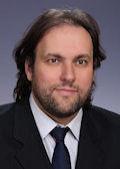 Dr. György Vereb recieved his M.D. in 1991 from the University Medical School of Debrecen (UMSD), where he joined the Dept. of Biophysics as a junior lab tutor already in 1986. Since then he's been working at this Department, currently heading the Lab for Signaling and Molecular Pharmacology. He uses various microscopic techniques in the investiagation of cellular processes, mostly related to cancer and tissue regeneration. He held a von Humboldt fellowship at the Dept. of Molecular Biology, Max Planck Inst. of Biophysical Chemistry between 1994-96. He received Ph.D. and D.Sc. degrees from the Hungarian Academy of Sciences in 1997 and 2007, respectively.
Dr. György Vereb recieved his M.D. in 1991 from the University Medical School of Debrecen (UMSD), where he joined the Dept. of Biophysics as a junior lab tutor already in 1986. Since then he's been working at this Department, currently heading the Lab for Signaling and Molecular Pharmacology. He uses various microscopic techniques in the investiagation of cellular processes, mostly related to cancer and tissue regeneration. He held a von Humboldt fellowship at the Dept. of Molecular Biology, Max Planck Inst. of Biophysical Chemistry between 1994-96. He received Ph.D. and D.Sc. degrees from the Hungarian Academy of Sciences in 1997 and 2007, respectively.
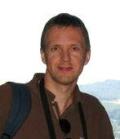 Dr. Péter Nagy graduated in medicine in 1995 and received his PhD from the University of Debrecen in 1999. He worked at the Department of Biophysics at the University of Debrecen between 1999 and 2001 and then spent three years as a postdoctoral fellow at the Max Planck Institute for Biophysical Chemistry in Göttingen, Germany. When returning home he joined the Department of Biophysics and Cell Biology at the University of Debrecen, where he was appointed to be an associate professor in 2010. He received the “Young Fluorescence Investigator Award” from the Biophysical Society in 2011. He has become an expert in the field of FRET (fluorescence resonance energy transfer) and N&B (number and brightness) analysis. He has applied these techniques for the investigation of the clustering of membrane proteins, especially EGF receptor family members, and studied the role of these clusters in transmembrane signaling and in the development of breast cancer.
Dr. Péter Nagy graduated in medicine in 1995 and received his PhD from the University of Debrecen in 1999. He worked at the Department of Biophysics at the University of Debrecen between 1999 and 2001 and then spent three years as a postdoctoral fellow at the Max Planck Institute for Biophysical Chemistry in Göttingen, Germany. When returning home he joined the Department of Biophysics and Cell Biology at the University of Debrecen, where he was appointed to be an associate professor in 2010. He received the “Young Fluorescence Investigator Award” from the Biophysical Society in 2011. He has become an expert in the field of FRET (fluorescence resonance energy transfer) and N&B (number and brightness) analysis. He has applied these techniques for the investigation of the clustering of membrane proteins, especially EGF receptor family members, and studied the role of these clusters in transmembrane signaling and in the development of breast cancer.
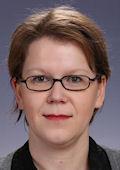 Dr. Andrea Dóczy-Bodnár graduated as a chemist in Debrecen in 1993. After graduation she joined to the Department of Biophysics and Cell Biology as a PhD student. Since 1996 she works in the HAS-UD Cell Biology and Signaling Research Group, where she studies cell surface organization and molecular interactions of proteins (e.g. interleukin-2, -15 and -9 receptors, MHC glycoproteins) playing key roles in T-cell-mediated immunity. She received her PhD in 2002. She spent several months in Regensburg (Department of Clinical Chemistry and Laboratory Medicine) and Cambridge (Babraham Institute). She is the secretary of the Doctoral School of Molecular Medicine, University of Debrecen.
Dr. Andrea Dóczy-Bodnár graduated as a chemist in Debrecen in 1993. After graduation she joined to the Department of Biophysics and Cell Biology as a PhD student. Since 1996 she works in the HAS-UD Cell Biology and Signaling Research Group, where she studies cell surface organization and molecular interactions of proteins (e.g. interleukin-2, -15 and -9 receptors, MHC glycoproteins) playing key roles in T-cell-mediated immunity. She received her PhD in 2002. She spent several months in Regensburg (Department of Clinical Chemistry and Laboratory Medicine) and Cambridge (Babraham Institute). She is the secretary of the Doctoral School of Molecular Medicine, University of Debrecen.
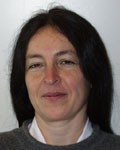 Dr. Katalin Tóth graduated as a physicist at Eötvös Loránd University, Budapest in 1977. She worked as an assistant professor, then associate professor at the Institute of Biophysics, Semmelweis University, Budapest between 1977-94. She visited the Laboratory of Solid State Physics, Université Pierre et Marie Curie Paris VI between 1979-81, and received her doctoral degree in biophysics (French 3eme cycle) in 1981. In 1991 she received her degree “Candidate of Biological Sciences“ from the Hungarian Academy of Sciences. Between 1991-92 she was invited lecturer at the University Joseph Fourier, Grenoble, France, and researcher at the Laboratory of Molecular and Cellular Biophysics of the CENG, Grenoble. From 1993 she worked as staff scientist in the Microfocus Beam line group at the European Synchrotron Radiation Facility, Grenoble. From 1994 she is staff scientist at the Division Biophysics of Macromolecules, DKFZ, Heidelberg. Her research field is the study of structure-function relationship of nucleoproteins, chromatin structure, epigenetics at the level of nucleosome structure, molecular interactions in live cells, drug binding to DNA, photobiology of psoralens and porphyrins. Methods include fluorescence spectroscopy, single molecule FRET, and fluorescence correlation spectroscopy.
Dr. Katalin Tóth graduated as a physicist at Eötvös Loránd University, Budapest in 1977. She worked as an assistant professor, then associate professor at the Institute of Biophysics, Semmelweis University, Budapest between 1977-94. She visited the Laboratory of Solid State Physics, Université Pierre et Marie Curie Paris VI between 1979-81, and received her doctoral degree in biophysics (French 3eme cycle) in 1981. In 1991 she received her degree “Candidate of Biological Sciences“ from the Hungarian Academy of Sciences. Between 1991-92 she was invited lecturer at the University Joseph Fourier, Grenoble, France, and researcher at the Laboratory of Molecular and Cellular Biophysics of the CENG, Grenoble. From 1993 she worked as staff scientist in the Microfocus Beam line group at the European Synchrotron Radiation Facility, Grenoble. From 1994 she is staff scientist at the Division Biophysics of Macromolecules, DKFZ, Heidelberg. Her research field is the study of structure-function relationship of nucleoproteins, chromatin structure, epigenetics at the level of nucleosome structure, molecular interactions in live cells, drug binding to DNA, photobiology of psoralens and porphyrins. Methods include fluorescence spectroscopy, single molecule FRET, and fluorescence correlation spectroscopy.

